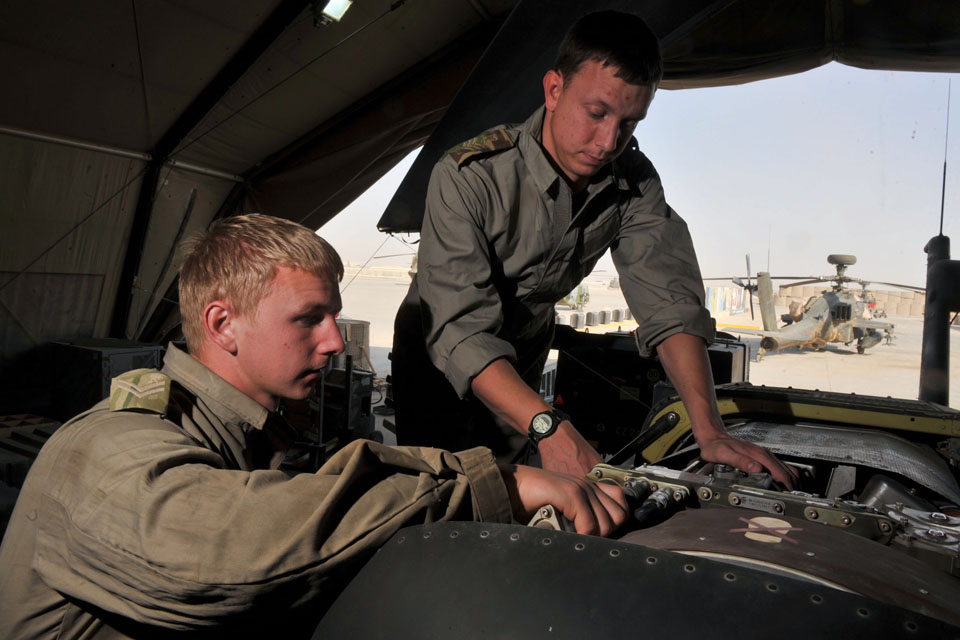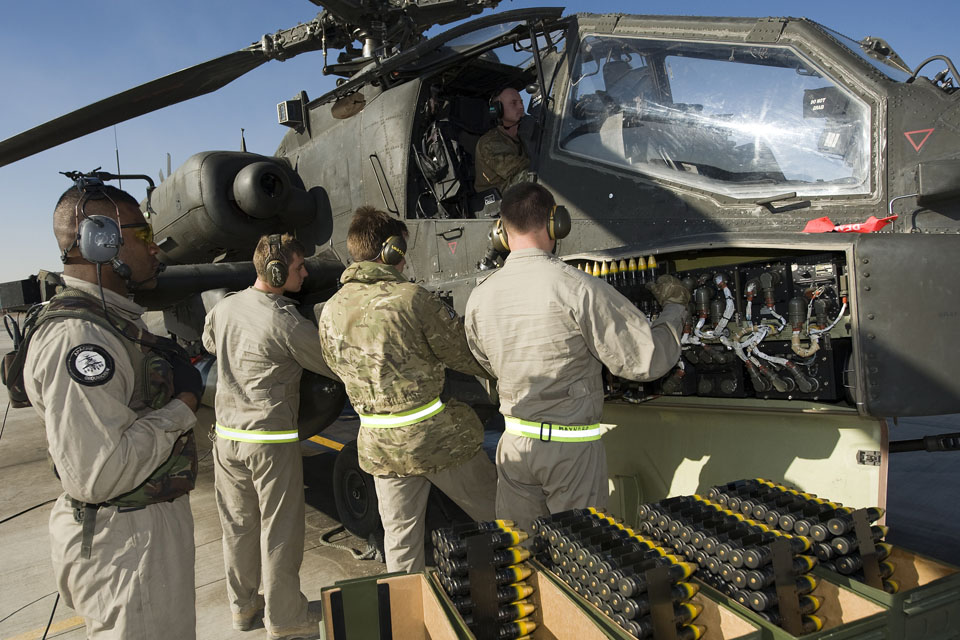Apache flies 50,000 hours on operations in Afghanistan
The British Army's Apache attack helicopters, operated by the Army Air Corps, flew their 50,000th hour on operation in Afghanistan recently.
![An Apache attack helicopter landing at Camp Bastion (library image) [Picture: Petty Officer (Photographer) Mez Merrill, Crown copyright]](https://assets.publishing.service.gov.uk/media/5a6181ed40f0b60abc672302/s300_45153345.jpg)
An Apache attack helicopter landing at Camp Bastion (library image)
This represents a third of all UK Apache flying, a huge proportion of the total. Apache helicopters have been conducting operations in Afghanistan since 2006, deploying initially with 16 Air Assault Brigade, shortly after being introduced into service with the British Army. Since then the aircraft have been constantly deployed on Operation Herrick, the UK’s name for operations in Afghanistan, where they provide support to ground forces, tactical strike, reconnaissance, and armed escort to other helicopters.
To maintain Apache’s high tempo of operations, the aircraft are fully supported by air and ground crews from the Army Air Corps (AAC), and technicians from the Royal Electrical and Mechanical Engineers (REME). All these soldiers perform a vital function, keeping the aircraft serviceable and airborne.

Army Air Corps ground crew prepare to refuel an Apache helicopter at Camp Bastion (library image) [Picture: Corporal Jamie Peters, Crown copyright]
The current detachment, 664 Squadron AAC, part of 4 Regiment AAC, is commanded by Major Simon Wilsey, who actually flew the 50,000th hour. Major Wilsey said:
The operational tempo we have maintained over the last 8 years has been challenging, but the resilience of our soldiers, and especially that of their families supporting them, is outstanding. I am proud and lucky to command such high calibre, professional soldiers and such an amazing capability as the Apache.
The Apache will continue to play a key role with 16 Air Assault Brigade once operations in Afghanistan draw to a close and the brigade starts to focus on readiness for contingency operations.

Aircraft technicians from the Royal Electrical and Mechanical Engineers service an Apache helicopter in Afghanistan (library image) [Picture: Corporal Mark Webster, Crown copyright]
Commander of the Joint Aviation Group, Colonel Jaimie Roylance of the Royal Marines, said:
This immaculately versatile machine has, for nearly 8 years, been the most clinically precise and effective attack helicopter when it has needed to be. But, equally, and sometimes at the same time, it has been the most wonderfully effective keeper of the peace, and protector of the vulnerable in its escort and deterrent roles.
There is a vital role for the Apache now, but I am just as sure that there will be an essential role for this exceptional helicopter, and for the force which flies and maintains her, in the years to come after Afghanistan.

Army Air Corps ground crew reloading ammunition onto an Apache attack helicopter in Afghanistan (library image) [Picture: Corporal Jamie Peters, Crown copyright]